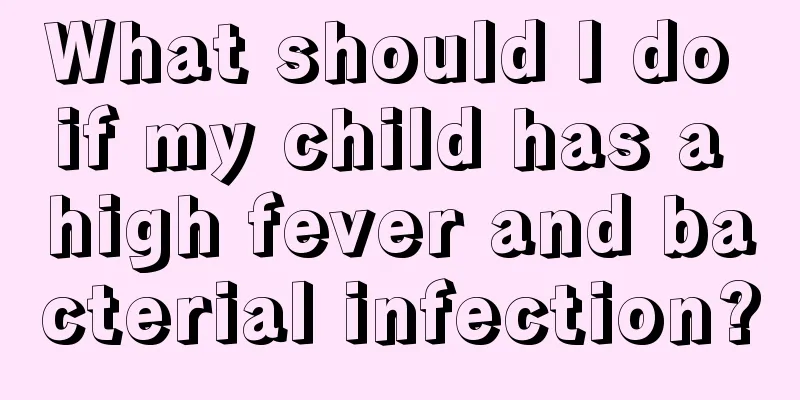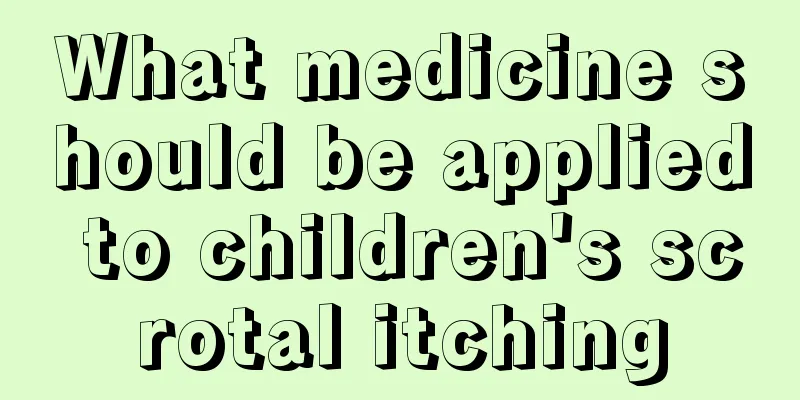What should I do if my child has a high fever and bacterial infection?

|
Fever is very common in daily life. Studies have shown that appropriate colds and fevers are beneficial to the human body. However, a child's fever attracts the attention of the family because the child's immunity is low. There are many reasons why children have bacterial infection fever. Parents usually feel headache and worry when they encounter this problem. So, what should we do when our children have a fever caused by bacterial infection? Let’s take a look at it together below! 1. Warm water bath Dip a towel in warm water (the water temperature should not be too hot to touch) and wipe the neck, armpits, and thighs for 5 to 10 minutes. You can also use a commercially available "cooling patch" (or a household ice pack) on the forehead to help dissipate heat and reduce temperature. 2. Take antipyretics When your baby's fever exceeds 38.5 degrees, the doctor will consider using oral medications or rectal suppositories to reduce your baby's fever. Or when the above physical measures are not effective, oral antipyretics can be taken to reduce the temperature. 3. Ventilation and heat dissipation Ventilate more, pay attention to heat dissipation, wear loose clothes, and avoid wrapping yourself with a quilt. You can use air conditioning in the summer and control the room temperature at around 27℃. Remember to open windows regularly to allow air convection in the room. 4. Ensure moisture Drink plenty of water and eat liquid foods, such as watermelon juice, to ensure that the body has sufficient energy and water. 5. Take off excess clothing If your baby's limbs, hands and feet are warm and he is sweating all over, it means he needs to dissipate heat and he can wear less clothes. 6. Get enough sleep Getting more sleep and ensuring adequate sleep can help you recover from the illness. However, when infants and young children under 3 years old have a high fever, physical cooling methods should be used first. Generally, antipyretic injections and antipyretic drugs are not required to avoid collapse and drug toxicity reactions. The use of other drugs should also be cautious. However, many parents believe that it is safe to help their baby reduce the fever as soon as possible. In fact, if it is a minor illness, the fever will last for about 2-3 days, and the normal attitude towards fever is to find out the cause behind the fever. It is unscientific to forcibly reduce the temperature. Don’t just ask the doctor to drive away the fever, because sometimes the fever is caused by something special going on in the body! The above is the solution to the problem of what to do when a child has a bacterial infection fever. Parents should not worry too much when their children have a high fever that does not subside. The most important thing is to take effective methods and prescribe the right medicine. In addition, don't just focus on reducing the fever, but find out the cause behind the fever and then treat it. |
<<: What should I do if my child gets prickly heat?
>>: What are the symptoms of gingivitis in babies?
Recommend
What causes abdominal distension and vomiting in children?
Friends who have babies at home are worried about...
Roseola infantum diarrhea
This symptom of emergency in young children can c...
Is a child's fever of 40 degrees dangerous?
Children's high fever must not exceed 40 degr...
What are the common causes of drooling in 3-year-old children?
Family members are very concerned about their chi...
Is it good for children to sleep more when they have a fever?
There are many reasons why children have a fever,...
Where to apply moxibustion for constipation in children
There are many reasons for constipation in childr...
Why does the baby hiccup when laughing?
For little babies, they are curious about everyth...
There is a small hole on the baby's butt
The arrival of a new life is always a joyful thin...
Can a one-year-old baby eat fried dough sticks?
In our country, most people love to eat fried dou...
What to do if your child's front teeth are broken
Bumps and bruises are inevitable in life. Many ch...
Is it good for children to drink milk at night?
Milk contains a lot of nutrients, especially for ...
What should I do if my baby always bites his lower lip?
Some babies have abnormal phenomena, especially s...
What medicine should children take for ear pain
Children are the flowers of the future of the mot...
What's wrong with baby's eye bags?
For mothers, if they find that their babies have ...
Causes of sore throat in newborns
Mothers are always worried about the health of th...









